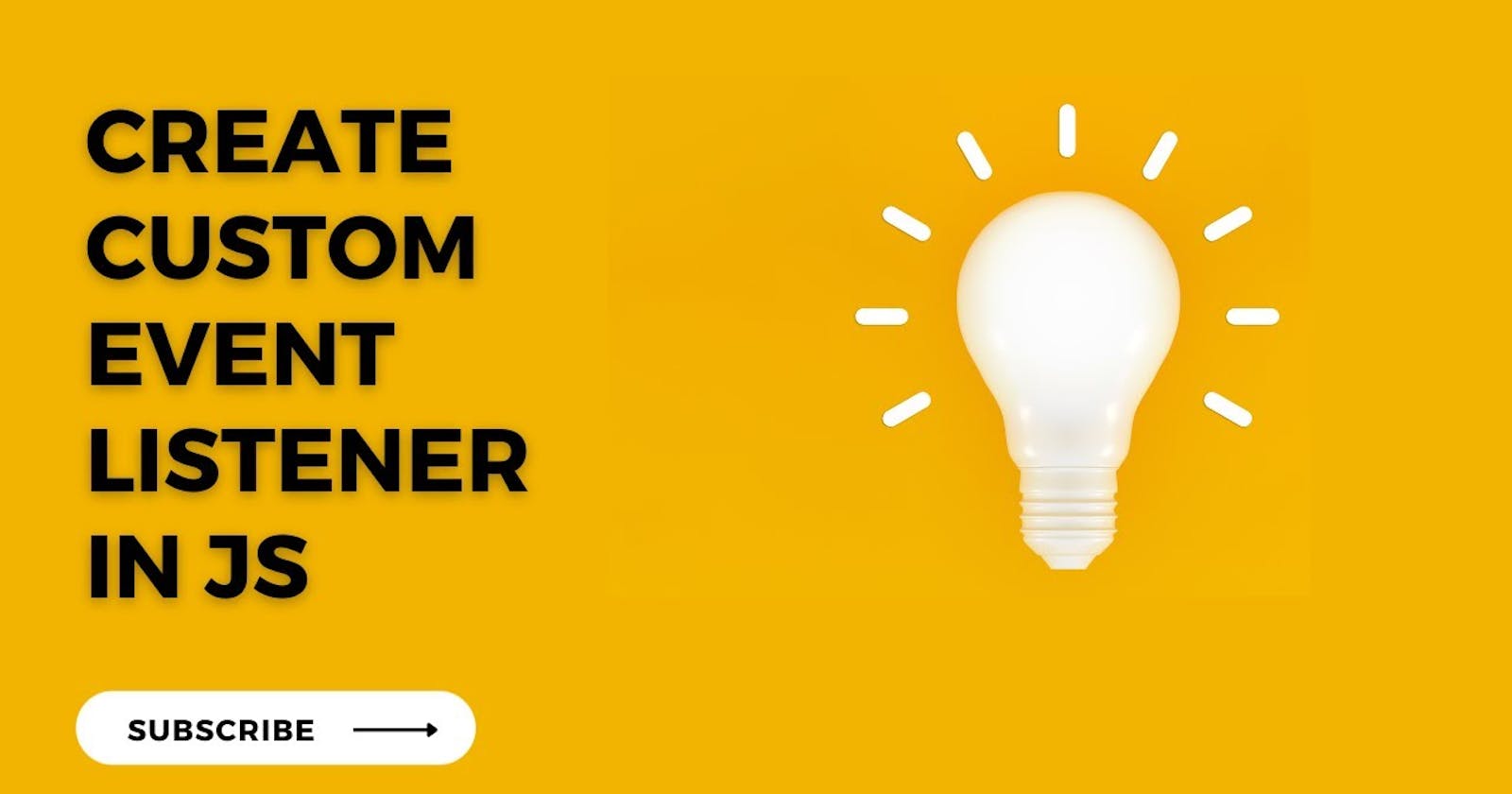Table of contents
No headings in the article.
Creating Custom Events in JavaScript: A Comprehensive Guide
Introduction
In the realm of JavaScript, events play a pivotal role in creating dynamic and interactive web applications. While JavaScript provides a plethora of built-in events, there are scenarios where developers need to create custom events to encapsulate specific functionalities or communicate between different parts of their application. This article dives deep into the art of creating custom events in JavaScript, exploring various scenarios and providing comprehensive code examples.
Why Create Custom Events?
Custom events empower developers to design more modular and maintainable code by decoupling components and promoting reusability. They offer a way to extend the native event system of JavaScript to suit specific application requirements. Here are some compelling reasons to create custom events:
Modularity: Custom events enable developers to encapsulate functionality within independent modules, promoting modularity and code organization.
Loose Coupling: By using custom events, components can communicate with each other without direct dependencies, leading to loosely coupled architecture.
Reusability: Custom events allow developers to reuse components across different parts of their application, enhancing code reusability and scalability.
Abstraction: They abstract away implementation details, providing a clean and intuitive interface for interaction between different modules.
How to Create Custom Events
Creating custom events in JavaScript involves a few key steps:
Event Initialization: First, define the custom event using the
CustomEventconstructor. This constructor accepts two parameters: the event type and an optional object containing additional event data.Event Dispatching: Next, dispatch the custom event using the
dispatchEventmethod on the target element or document. This triggers the event, allowing registered event listeners to respond accordingly.Event Listening: Finally, listen for the custom event using the
addEventListenermethod. This allows you to define handlers that execute when the custom event is fired.
Code Examples
Let's explore how to create custom events with detailed code examples covering various scenarios:
Scenario 1: Basic Custom Event
// Define custom event
const customEvent = new CustomEvent('myEvent', { detail: { message: 'Hello World!' } });
// Dispatch custom event
document.dispatchEvent(customEvent);
// Listen for custom event
document.addEventListener('myEvent', (event) => {
console.log(event.detail.message); // Output: Hello World!
});
In this example, we define a basic custom event named myEvent, dispatch it on the document, and listen for it to log the message "Hello World!".
Scenario 2: Custom Event with Target
// Define custom event with target
const button = document.querySelector('button');
const customEvent = new CustomEvent('buttonClick', { detail: { message: 'Button clicked!' } });
// Dispatch custom event on button click
button.addEventListener('click', () => {
button.dispatchEvent(customEvent);
});
// Listen for custom event
button.addEventListener('buttonClick', (event) => {
console.log(event.detail.message); // Output: Button clicked!
});
In this example, we create a custom event named buttonClick associated with a button element. When the button is clicked, the custom event is dispatched, and its message is logged.
Scenario 3: Custom Event with Data
// Define custom event with data
const data = { name: 'John', age: 30 };
const customEvent = new CustomEvent('userData', { detail: data });
// Dispatch custom event
document.dispatchEvent(customEvent);
// Listen for custom event
document.addEventListener('userData', (event) => {
console.log(event.detail.name); // Output: John
console.log(event.detail.age); // Output: 30
});
Here, we create a custom event named userData with additional data attached. When the event is dispatched and listened for, we can access the data within the event detail.
FAQ Section
Q: Can custom events bubble like native events? A: Yes, custom events can bubble up through the DOM tree like native events using the bubbles option when initializing the CustomEvent.
Q: How can I pass complex data with custom events? A: You can pass complex data with custom events by including it in the detail property of the event initialization.
Q: Are there any performance considerations when using custom events? A: While custom events provide flexibility, excessive use may impact performance. It's essential to use them judiciously and consider alternative patterns for performance-critical applications.
Conclusion
Custom events are a powerful tool in the JavaScript developer's arsenal, offering a flexible mechanism for inter-component communication and code organization. By mastering the creation and utilization of custom events, developers can build more modular, maintainable, and scalable web applications. Incorporate custom events wisely into your projects to unlock their full potential and elevate your JavaScript development skills.
